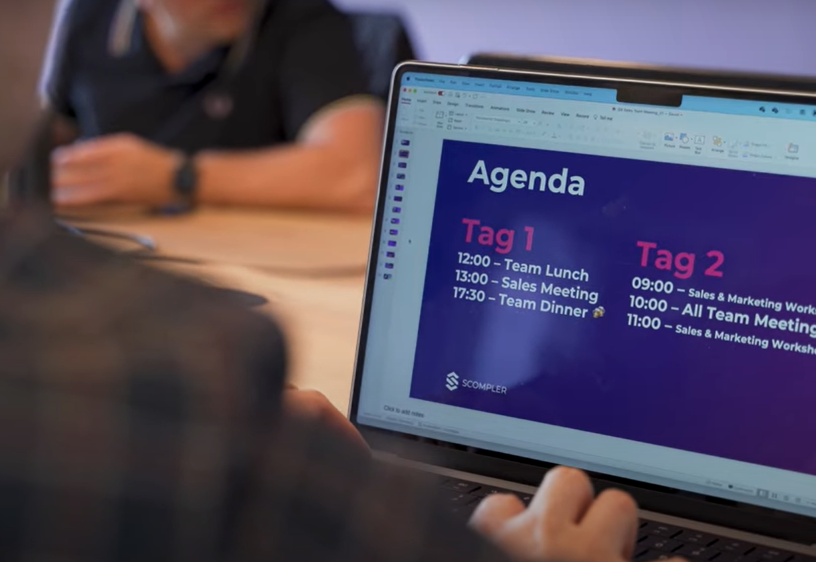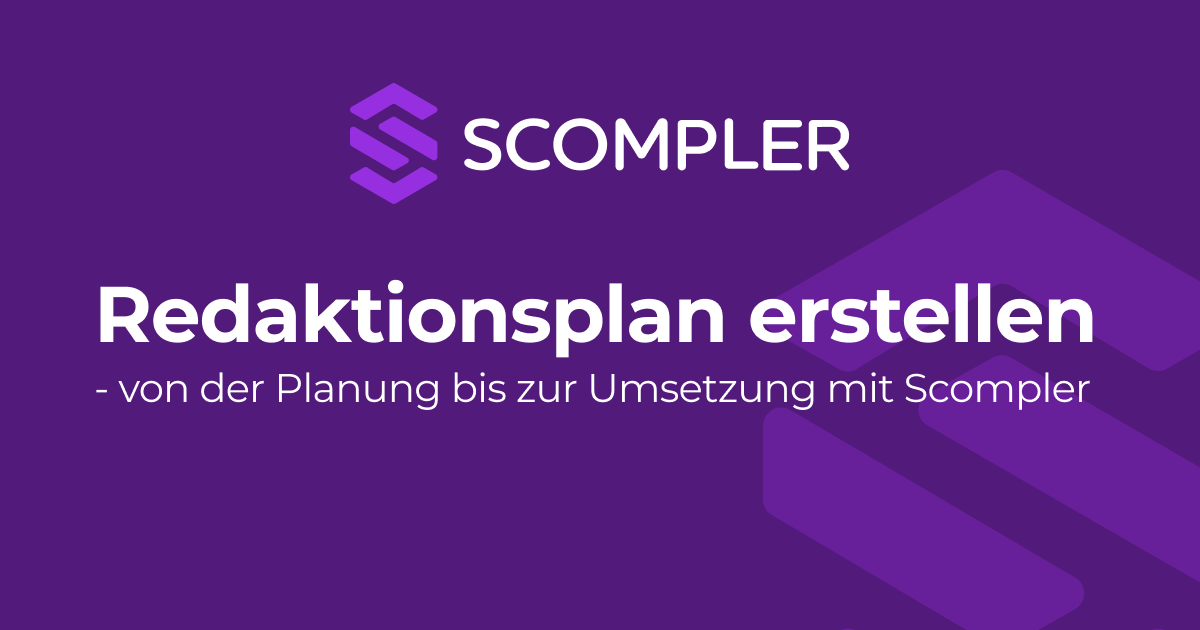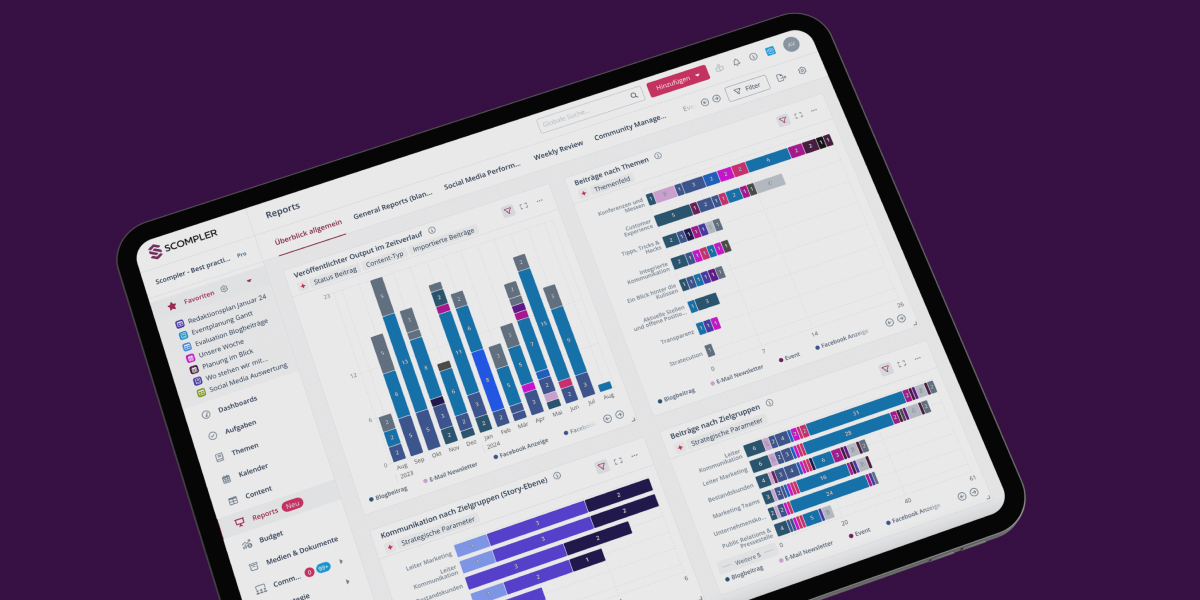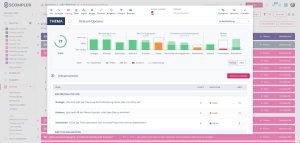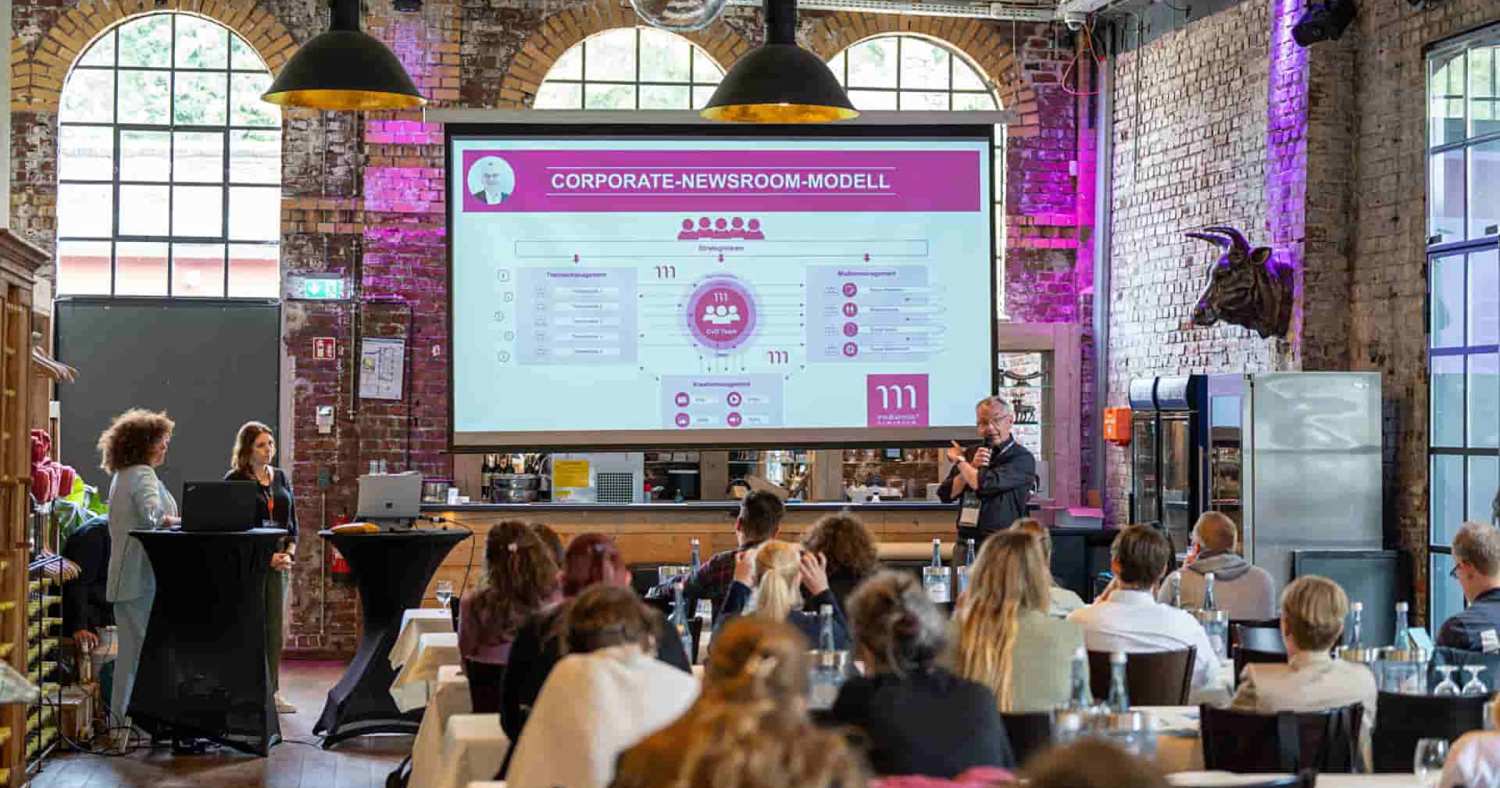Definition of
What does internal and external communication mean in companies?
Internal communication
Internal communication encompasses all information flows and exchange processes within a company. It is aimed at informing and motivating employees and optimizing organizational processes. Typical tools of internal communication are e-mails, intranets, team meetings and employee newsletters. Effective internal communication contributes significantly to employee satisfaction and the efficiency of the company.
External communication
External communication, on the other hand, refers to the exchange of information between the company and external stakeholders such as customers, suppliers, the media and the general public. It serves to maintain the company's image, strengthen customer relationships and inform the public about the company's activities and values. External communication tools include press releases, social media, advertising campaigns and public appearances. Well-planned and executed external communication can have a significant impact on the trust and loyalty of target groups.

Challenges of internal and external communication in companies
This affects many medium-sized companies. Unclear communication often leads to misunderstandings, inefficient work processes and missed business opportunities. Another problem is coordination between different departments, which often work in isolation and lose valuable synergies as a result.
Effective communication is the key to the success of any company. It not only improves employee morale and productivity, but also strengthens relationships with customers and business partners. But how can communication be improved in a medium-sized company? One possible solution is the use of Scompler.

5 steps to improve internal and external communication
This section presents five key steps that SMEs can take to efficiently improve their internal and external communication by using Scompler . These steps help to optimize communication processes, minimize misunderstandings and ensure a coherent message both internally and externally.
1. define clear communication strategies
The first step is to develop clear communication strategies for both internal and external communication. This includes defining communication goals, target groups and the right channels to achieve these goals. A well-thought-out communication plan ensures that everyone involved is on the same page and that misunderstandings are avoided.
2. encourage regular and open communication
It is important to promote an open dialog within the company by establishing regular meetings, updates and feedback sessions. Transparent information sharing with external stakeholders is also crucial. This regularity and openness creates trust and a positive communication culture.
3. use digitalization and modern tools
The use of modern communication tools such as Scompler can help to improve the efficiency and transparency of communication. Platforms for project management, chat apps and digital collaboration tools enable teams to work together more efficiently and share information quickly.
4. train and sensitize employees
Training employees in effective communication skills is essential. Workshops and training programs can help convey the importance of clear and respectful communication and improve the use of communication tools.
5. obtain feedback and continuously optimize
It is important to regularly obtain feedback from both internal and external stakeholders in order to review and optimize communication strategies. By analyzing this feedback, weaknesses can be identified and improvements can be continuously implemented to keep communication processes at a high level.
The importance of effective communication for business growth and success
Effective communication is essential for the growth and success of a company. It makes it possible to set clear goals, communicate expectations and pursue a coherent strategy. Internally, it ensures better collaboration and strengthens trust among employees. Externally, it helps to build a consistent brand image and strengthen customer loyalty.
A well-thought-out communication strategy can make the difference between success and failure. Companies that invest in their communication processes often see an improvement in their business performance, higher customer satisfaction and increased employee retention. This shows the importance of overcoming communication barriers and using effective tools.
Introduction of Scompler as a solution for improving internal and external communication
Scompler is an innovative, web-based software that has been specially developed to improve communication in companies. It supports both internal and external communication and offers a wide range of functions tailored to the needs of medium-sized companies. With Scompler , companies can optimize their content strategy, promote team collaboration and ensure consistent communication.
Scompler helps to clearly structure topics and manage their implementation in day-to-day business. It promotes a shared understanding of content and facilitates coordinated work with topics. Thanks to its channel-neutral approach, Scompler enables flexible and efficient communication across different channels.
How Scompler works and its key features to improve team collaboration and content creation
Scompler offers a user-friendly interface and a variety of features specifically designed to improve team collaboration and content creation. With Scompler , teams can plan their content strategy, develop topics and stories and implement them efficiently across different channels.
The most important functions of Scompler include
Topic architecture: Define the topics relevant to your company and structure them clearly.
Content planning: Plan and manage your content in a central system. Scompler helps you to publish the right content at the right time.
Collaboration: Promote teamwork through joint projects and tasks. Scompler offers communication and coordination tools that facilitate teamwork.
Analysis: Track the performance of your content and gain valuable insights to optimize your strategy.

Examples of medium-sized companies that have successfully used Scompler
Many medium-sized companies have already successfully integrated Scompler into their communication strategy and report positive results. Here are a few examples:
Example: Newsroom of Welthungerhilfe
The Welthungerhilfe newsroom represents an important milestone in global corporate communications, as it enables efficient and coordinated collaboration with editors around the world.
The central management of information and the uniform coordination of communication activities ensure that all news and publications are disseminated consistently and promptly. This not only improves Welthungerhilfe's transparency and credibility, but also strengthens its position as a reliable and competent source of information in the fight against global hunger. You can find more information about the newsroom here.
Example: Fridays for Future
Fridays for Future uses the Scompler app to plan and implement its communication strategy. Scompler supports the organization in disseminating its topics in a targeted and consistent manner. Through structured planning, the organization can track reactions to its posts in real time and react quickly to current events. This ensures that their communication is always relevant and up-to-date.
Important FAQs about the Scompler app
Scompler is a web-based software that has been specially developed to optimize internal and external communication in companies. With a clear topic architecture and efficient content planning, Scompler supports companies in pursuing a consistent communication strategy and improving team collaboration.
Scompler has a variety of functions that promote team collaboration. These include joint projects and tasks, communication and coordination tools and a central platform for managing and planning content. These functions enable smooth and effective collaboration between team members.
Scompler enables the clear structuring and planning of content. Topic architecture allows relevant topics to be defined and organized, while content planning ensures that the right content is published at the right time. Analytics and performance tracking tools provide valuable insights to continuously optimize the content strategy.
Yes, Scompler supports external communication through consistent and structured content planning and publication. This helps to strengthen the brand image and increase customer loyalty. The software facilitates cross-channel communication and enables coordinated content publication across different platforms.
Scompler improves internal communication through clear topic and content structures that facilitate collaboration between different departments. The centralized system promotes transparent communication and ensures that all team members have access to the relevant information. This leads to more efficient workflows and better internal coordination.

"When creating an editorial plan, a well-thought-out and topic-oriented approach is crucial to the success of your content strategy. Use the right tools and a structured way of working to ensure your content is always relevant, engaging and targeted."

Mirko Lange
Founder, Scompler Technologies GmbH
Relevant articles
Learn how to grow your business with our expert advice.
New integration of Scompler and Presspage simplifies and strengthens media relations
Data-based communication is seen as an important trend in content marketing and corporate communication, especially due to the influence of AI systems such as ChatGPT. Market and opinion research offers companies an exclusive and strategically valuable database for PR and marketing. This data makes it possible to identify trends and measure the effectiveness of campaigns. However, a survey by Scompler and Civey reveals that only around 25% of companies actually use this data. This shows a significant untapped potential that could be exploited more to improve communication and gain competitive advantage.
Scompler Mirko Lange leaves operational business: "Scompler in an excellent position"
Data-based communication is seen as an important trend in content marketing and corporate communication, especially due to the influence of AI systems such as ChatGPT. Market and opinion research offers companies an exclusive and strategically valuable database for PR and marketing. This data makes it possible to identify trends and measure the effectiveness of campaigns. However, a survey by Scompler and Civey reveals that only around 25% of companies actually use this data. This shows a significant untapped potential that could be exploited more to improve communication and gain competitive advantage.



